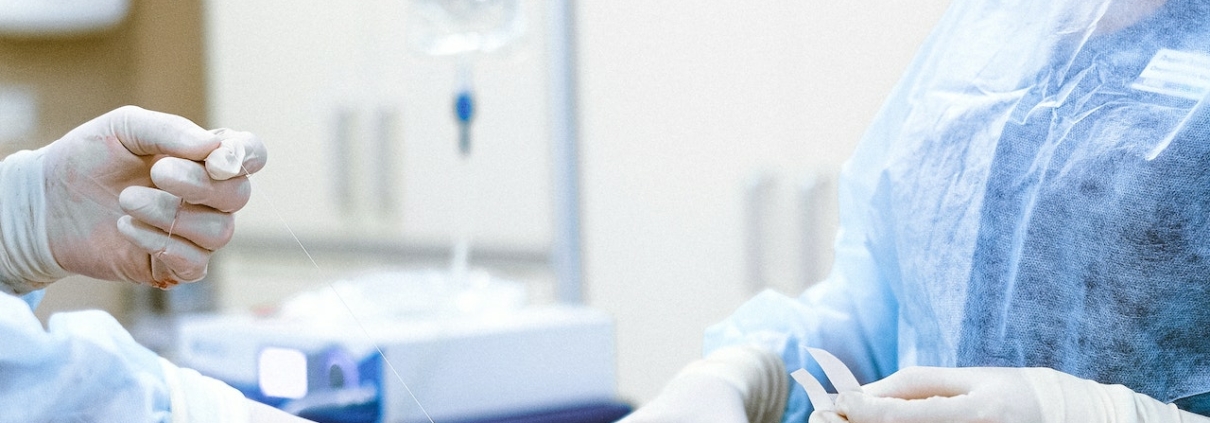Surgical Sutures and Stitch Types: A Guide
Surgical sutures and stitches are used to close wounds to the skin and other tissues.
This is an essential introduction to the different types of surgical sutures and stitches. We’ll briefly discuss what each type is used for and explore the sort of specialist surgical instruments doctors use to apply sutures.
What’s the Difference Between Sutures and Stitches?
The terms “sutures” and “stitches” are often used interchangeably. The key difference is that a suture is a medical device surgeons use to repair a wound and stitching is a technique surgeons use to repair wounds with sutures.
Even the most experienced surgeon might sometimes refer to “sutures” as “stitches”, and vice-versa. Most people will understand what you mean if you use either term. But it’s important to understand the difference, nonetheless.
The Different Types of Sutures
There are three key ways to classify sutures:
- Absorbable or nonabsorbable. Absorbable sutures will be naturally digested by the enzymes in your body, over time. Nonabsorbable sutures will either be left in permanently, or else they’ll be removed by a doctor at a later date.
- Some sutures are monofilament, meaning they consist of a single thread, for quicker and easier stitching. Other sutures are braided, making for a more secure stitching.
- Sutures will either be made from a natural or a synthetic material.
Suture Grades
To help surgeons select the appropriate type of suture for each application, sutures are graded by the diameter of the strand. The suture grading system involved an O followed by a number. This number indicates the diameter of the suture. The higher the number, the lower the diameter.
Types of Suture
Please note that this is not an exhaustive list. We just want to provide a few examples of the different types of sutures, along with their applications.
- A natural, absorbable, monofilament suture, largely used to close internal soft tissue wounds.
- Polydioxanone (PDS). A synthetic, absorbable, monofilament suture that’s suitable for paediatric cardiac procedures, as well as in many types of soft tissue surgery.
- Polyglactin (Vicryl). A synthetic, absorbable, braided suture that’s durable enough for use in repairing external lacerations, such as on the hand and face. Though as certain braided sutures can make wounds more vulnerable to infection, sutures of this type should not be used in cardiovascular procedures.
- Nylon and silk. Nylon sutures are monofilament, whereas silk sutures are braided. Both types are nonabsorbable, and suitable for general use for most types of soft tissue repair.
Types of Suture Techniques
As well as selecting from different types of sutures, surgeons can also choose from a variety of suture techniques depending on the procedure.
Here are some examples of the types of suture techniques. But once again, please note that this is not an exhaustive list:
- Continuous sutures. In which surgeons will make a series of stitches with a single strand of suture. A skilled surgeon can apply continuous sutures quickly, and as the tension’s distributed evenly across the wound, the stitch tends to be quite strong.
- Interrupted sutures. Rather than making a series of stitches with a single suture, surgeons may instead make a stitch, cut and tie it off, and then make another – repeating the process until the wound’s closed. This technique takes longer, but the stitch can be more secure, as even if one suture breaks, the rest will stay in place.
- Purse-string sutures. A type of continuous suture which involves stitching a suture around an area, before tightening it like you would the strings on a purse. One possible application of this type of suture is to secure a stapling device to the intestines.
- Buried sutures. With this type of suture, surgeons tie the knot within the area they’re closing off. It’s a method for making secure stitches deep within the body, and typically, the sutures are not intended to be removed.
Types of Suture Needles
To apply a suture to a wound, surgeons will first attach the suture to a needle. There are a few different types of suture needles:
- For easy manoeuvrability in small spaces. The curved shape of the needle allows the surgeon to stitch a wound by simply turning their wrist.
- For making very precise and neat stitches. These are good for fixing external lacerations, but they’re unsuitable for deeper wounds, as surgeons need a lot of space to use them.
- For when surgeons need to puncture tissue so they can pass through it. Most suture needles have sharp tips for this very purpose.
- The rounded tip means that blunt suture needles can still separate tissue, but there’s less risk that they’ll inadvertently prick organs and other bits of tissue.
Surgeons will also use forceps and other types of surgical equipment to give them a tight grip and reliable control of their suture needles as they stitch wounds. Read our full guide to the different types of surgical forceps.
Taking Care of Your Surgical Instruments
Effectively sterilising and cleaning surgical instruments is an essential part of infection prevention and control in medical settings, particularly when the procedure involves working so close to soft tissues and open wounds. Taking care of your surgical instruments will also prolong their lifespan, keeping them as reliable as possible for as long as possible.
We have a few guides that will help you take better care of your surgical instruments:
- How do you sterilise and clean surgical instruments
- Understanding the differences between surgical steel and stainless steel
- 8 tips for better surgical instrument care and handling [Infographic]
- Surgical instrument discolouration guide [Infographic]
At Cairn Technology, we have one of the most comprehensive offerings of high-quality surgical instruments on the UK market. Take a look at our range of surgical instruments.
For a free quote, or to discuss your surgical needs with one of our friendly experts, get in touch today.


